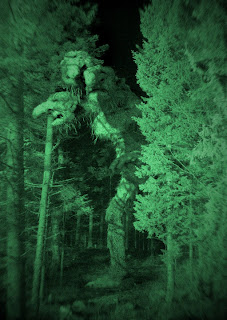Warlord (vol. 1) #61 (September 1982)
Written by Mike Grell (Sharon Grell); Penciled by Jan Duursema; Inked by Bruce Patterson
Synopsis: In the palace of Shamballah, Tara speaks with her “oldest councilman” whose name must be Omniscient Exposition because he helpfully runs down the events of the previous "kidnapping and replacement of Morgan with an impostor" story arc--including her growing closer to her childhood sweetheart, Graemore. He suggests she’s got to get her feelings in order to get her house in order. Mulling this over, Tara looks out over the balcony to see Morgan and Graemore having a duel below. Unsurprisingly, Morgan wins and soon has his sword point at Graemore’s throat.
Tara shows up and angrily demands to know what they were doing. Morgan says it was just a little fun--a contest to see who was the better swordsman, the better man. Tara suggests that being a better with a sword doesn’t make one a better man. She tells them not to engage in such foolishness any more, and storms off. Morgan’s response:
Meanwhile, Darvin and Griff are talking in their new hideout. Darvin tells Griff what he’s intuited about Tinder’s parentage because of the armband (Morgan’s wristwatch). He wants to make the royals pay to get their son back. Griff points out he doesn’t have Tinder. Darvin counters he does have the armband and Griff--and some red hair dye.
In the palace, Morgan and Graemore lounge around drinking. Morgan asks Graemore about his past with Tara. Graemore admits his love for her and reveals it was only the old king threatening his family that ultimately kept them apart. Then, Graemore gives Morgan a warning:
A little later, Tara summons Morgan to show him a message she’s just received. Someone is holding their son “Joshua” for ransom. Morgan knows it to be a lie, as he believes he killed Joshua (though, as faithful readers know, he did not). He surmises that this means they have Tinder, whom they think is Joshua because of the wristwatch. Though he suggests they sleep on it before they act, Morgan wants to catch whoever sent the message; they were helping his kidnapper Praedor and they now have the boy who freed him.
Meanwhile, Darvin’s eye-patched lackey returns to tell him that the message was delivered. Griff’s now a redhead, meant to fool the royals into thinking he’s Tinder. Darvin sends the one-eyed kid up to the roof as a lookout. As soon as the kid’s up there, he lights a cigarette...and carelessly disposes of his match.
Back in the palace, Morgan can’t sleep. He heads out into the city toward the appointed place of rendezvous. He finds the building burned down. Sifting through the ash and rubble, he finds his wristwatch with the skeleton of a boy too tall to be Tinder. He realizes the boy must have escaped, but he's unaware that the boy watches him at that moment. Tinder looks down from a nearby perch and realizes that Morgan is going to keep his talisman--and that (seeing Morgan for the first time without the mask) he’s the king!
Morgan returns to the palace and awakens Tara. He tells her what he found and that the boy they had couldn’t have been the one who helped him. He returns the wrist watch to her, telling her he wishes he could have returned her son.
Later, Tinder sneaks into the palace grounds and climbs up to look in the window of Tara’s chamber. The queen and her mate are sleeping, and Tinder sees his talisman around the queen’s upper arm. Resigned to the fact he won’t be getting it back, Tinder leaves the palace and hops a wagon heading out of town.
Things to Notice:
- We see someone smoking a cigarette in Skartaris for the first time. In fact, other than Mungo Ironhand, this may be the first time we see someone smoking.
- Graemore seems less of the delicate type he'll seem later in the series.
- Praedor's name is still spelled "Praydor" in this issue.
A talisman is a charm or amulet believed to have supernatural power. In a less literal way, the wrist watch is indeed that: for Tara and Morgan it's symbolic of the son they lost, for Darvin it's the key to the big score, and for Tinder its in some clear way representative of who he is (ironically, he has no idea how much it is). Significantly, all the principles are frustrated in their desires.
This is sort of an epilogue to the whole impostor storyline. Tinder is again shuttled off stage. We won't see him again for some twenty issues.

























